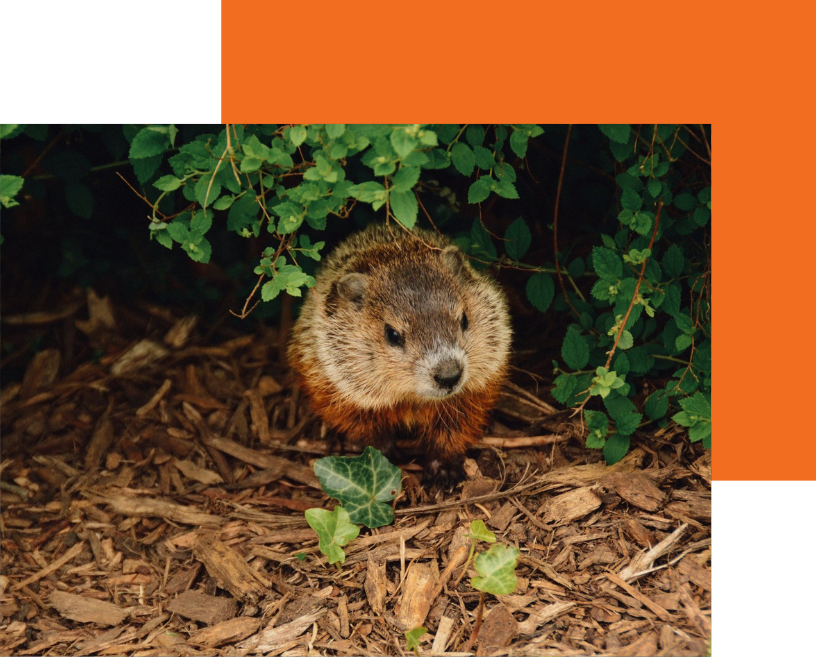Groundhogs
The groundhog has become one of the most beloved animals throughout the United States. Every February, we wait for this little critter to poke its head of out its burrow to let us know our fate with the weather for the year on Groundhog Day. Yet, after that, the little animal goes back to being a nuisance. Also known as the “woodchuck” or “whistle pig,” groundhogs are among the most notorious members of the squirrel family. (Yes, these 10-lb balls of burrowing fur are giant squirrels!)
In Missouri and Illinois, they’re more likely to wreak havoc on farmland, creating terribly dangerous holes across the landscape that pose safety risks to humans, horses, and farm maintenance equipment, primarily. These critters are not as shy as other digging pests like gophers, who are known to only poke their heads out of their holes for swift feeding to avoid detection by predators or angry humans.
Instead, groundhogs are much bolder and will venture as far as 100-200 feet away from their burrows to sunbathe and look for food. Although you are likely to have more of an issue with these critters in rural areas, their diet motivates them to travel further out to urbanized spaces. They’ve got a taste for alfalfa and clover, but the sweet fruits grown in city gardens are too good to pass up. Groundhogs have been known to track down sweet corn, squash, root crops (i.e., potatoes, carrots), and more when looking for a new place to establish their home, .
If you’re growing any of these foods in your garden, it is imperative that you keep your eye out for signs of these critters, as they can clear out your garden in fewer than seven days. Looking for signs of groundhog activity near sheds or other wooden shelters is your best bet for identifying a colony on your property.
Identifying and eliminating a groundhog colony is not a task that should be taken in slow strides. These infestations can grow rapidly, thanks to the females’ ability to birth up to six offspring in a single litter, twice a year. Not only are your plants in danger of being wiped out if the problem goes untreated, but your health and safety are at risk as well.
Although they are not considered a public health risk in Illinois, groundhogs are known to carry tularemia. This is a bacterial disease that can impose terrible symptoms upon infection, including:
- Fever
- Chills
- Headaches
- Gastrointestinal issues
- Joint and muscle pain
This is the primary reason why you should never take a groundhog infestation into your own hands. DIY solutions, especially trapping, will increase your risk of contracting this disease or being bitten. Instead, you should call an expert pest control service upon noticing the first signs of the groundhog colony.
Cardinal Insect & Pest Solutions is prepared to treat and defend your home from these burrowing nuisances on multiple levels. With an Integrated Pest Management approach, our services range from chemical control to environmental exclusion. To rid your home of these pests and restore the security of your health and safety, call Cardinal Insect & Pest Solutions today.


